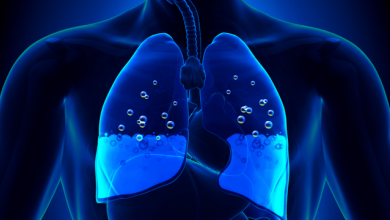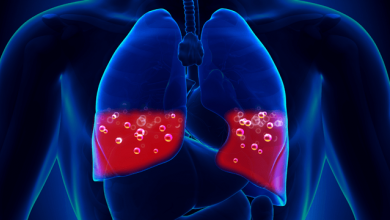Search results
Author(s):
Saumil R Shah
,
Sergio Waxman
,
William H Gaasch
Added:
3 years ago
Pulmonary venous hypertension and congestion that occurs with left ventricular (LV) failure is generally not seen in the presence of a large atrial septal defect (ASD). As long as right ventricular (RV) function and distensibility are not impaired, the ASD provides an alternate pathway for atrial emptying, thus preventing or attenuating elevated LV filling pressures. When RV dysfunction develops…
View more
Author(s):
Tasneem Z Naqvi
Added:
3 years ago
Congestive heart failure (CHF) is the number one hospital discharge diagnosis for older adults and the leading cause of hospital readmissions, reflecting poor quality of life for patients and increased healthcare resource use, and is the cause of 300,000 deaths annually.1 Cardiac resynchronization therapy (CRT) has become a new effective treatment modality in those with drug-resistant advanced…
View more
Author(s):
Alan J Bank
,
Kevin V Burns
,
Ryan M Gage
Added:
3 years ago
Cardiac resynchronization therapy (CRT) is a well-accepted and proven therapy for the treatment of patients with advanced heart failure (HF), significant left ventricular (LV) systolic dysfunction, and a wide QRS complex on electrocardiogram (ECG). In this patient population, large multicenter studies have demonstrated that CRT improves symptoms of HF, exercise capacity, LV size and systolic…
View more
Pulmonary Thromboendarterectomy
Author(s):
Stuart W Jamieson
Added:
3 years ago
Article
Author(s):
Mark Huffman
,
Vallerie V McLaughlin
Added:
3 years ago
Idiopathic pulmonary arterial hypertension (formerly referred to as primary pulmonary hypertension) is an uncommon yet progressively fatal disease defined by the presence of mean pulmonary artery pressure greater than 25mmHg at rest or greater than 30mmHg with exercise as tested by right heart catheterization in the absence of other etiologies for pulmonary hypertension. Across several studied…
View more
Author(s):
Shamai A Grossman
Added:
3 years ago
Introduction
Congestive heart failure (CHF) is an imbalance in pump function in which the heart fails to maintain the circulation of blood adequately. The most severe manifestation of CHF, pulmonary edema, develops when this imbalance causes an increase in lung fluid secondary to leakage from pulmonary capillaries into the interstitium and alveoli of the lung.
CHF can be categorized as forward…
View more
Author(s):
Mark Huffman
,
Vallerie V McLaughlin
Added:
3 years ago
Idiopathic pulmonary arterial hypertension (formerly referred to as primary pulmonary hypertension) is an uncommon yet progressively fatal disease defined by the presence of mean pulmonary artery pressure greater than 25mmHg at rest or greater than 30mmHg with exercise as tested by right heart catheterization in the absence of other etiologies for pulmonary hypertension. Across several studied…
View more
Author(s):
Michael D McGoon
Added:
3 years ago
Pulmonary hypertension (PH) is a hemodynamic condition defined by pulmonary arterial systolic pressure (PASP) above an upper limit of 35mmHg, or by pulmonary arterial mean pressure (PAMP) exceeding 25mmHg at rest. Pulmonary arterial hypertension (PAH) is present when pre-capillary pulmonary vascular pressure is elevated in the absence of pulmonary capillary wedge pressure >15mmHg, such as that…
View more
Author(s):
Shamai A Grossman
Added:
3 years ago
Introduction
Congestive heart failure (CHF) is an imbalance in pump function in which the heart fails to maintain the circulation of blood adequately. The most severe manifestation of CHF, pulmonary edema, develops when this imbalance causes an increase in lung fluid secondary to leakage from pulmonary capillaries into the interstitium and alveoli of the lung.
CHF can be categorized as forward…
View more
Author(s):
Michael D McGoon
Added:
3 years ago
Pulmonary hypertension (PH) is a hemodynamic condition defined by pulmonary arterial systolic pressure (PASP) above an upper limit of 35mmHg, or by pulmonary arterial mean pressure (PAMP) exceeding 25mmHg at rest.1,2 Pulmonary arterial hypertension (PAH) is present when pre-capillary pulmonary vascular pressure is elevated in the absence of pulmonary capillary wedge pressure >15mmHg, such as…
View more












